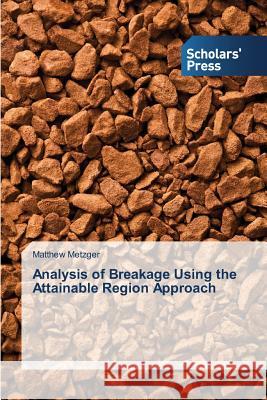Analysis of Breakage Using the Attainable Region Approach » książka
Analysis of Breakage Using the Attainable Region Approach
ISBN-13: 9783639704648 / Angielski / Miękka / 2014 / 296 str.
Breakage of particulate materials is an essential process in many industries. Despite its prevalence, size reduction is one of the most inefficient unit operations in the collection of particulate processing operations. In this work, the breakage of granular materials in a batch ball mill, a commonly encountered industrial system, was investigated using computational and experimental techniques. Investigations using the Discrete Element Method (DEM) and a bench-top ball mill explore the dynamic interplay between energy input, particle motion, particle selection and, ultimately, the size reduction process. A technique known as the Attainable Region (AR) approach is used to determine and select optimal conditions to maximize efficient particle breakage. Findings presented in this work contribute to the understanding of granular behavior in size reduction environments. Improved understanding of the particle breakage phenomenon will contribute to the development of more robust models and lead to improved energy efficiency and reduced operational costs in the industrial processing of granular materials
Breakage of particulate materials is an essential process in many industries. Despite its prevalence, size reduction is one of the most inefficient unit operations in the collection of particulate processing operations. In this work, the breakage of granular materials in a batch ball mill, a commonly encountered industrial system, was investigated using computational and experimental techniques. Investigations using the Discrete Element Method (DEM) and a bench-top ball mill explore the dynamic interplay between energy input, particle motion, particle selection and, ultimately, the size reduction process. A technique known as the Attainable Region (AR) approach is used to determine and select optimal conditions to maximize efficient particle breakage. Findings presented in this work contribute to the understanding of granular behavior in size reduction environments. Improved understanding of the particle breakage phenomenon will contribute to the development of more robust models and lead to improved energy efficiency and reduced operational costs in the industrial processing of granular materials











